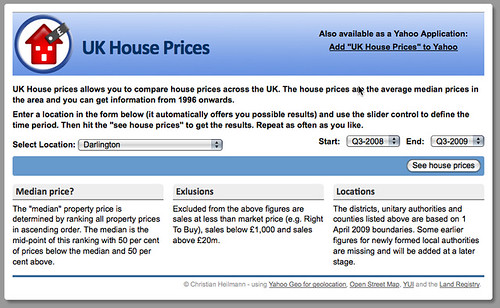UK Government says no to upgrading IE6 – who is to blame?
Thursday, August 5th, 2010Back in June Dan Frydman of Inigo Media Ltd submitted a petition to the UK government to encourage government departments to upgrade from IE6 and 6223 people signed it.
A short time ago we got an answer by her Majesty’s government which was a no – of course.
Government says no
Disregarding the horrible PR mumbo-jumbo re-assuring us that the government takes security serious (when they are not leaving personal data files on trains) it gets actually interesting:
Complex software will always have vulnerabilities and motivated adversaries will always work to discover and take advantage of them. There is no evidence that upgrading away from the latest fully patched versions of Internet Explorer to other browsers will make users more secure. Regular software patching and updating will help defend against the latest threats.
This of course is a wonderful example of stating the bleeding obvious, but it is interesting that there is “no evidence that upgrading IE6 makes computers more secure”. I wonder why Microsoft then keeps advertising that IE8 is more secure? True, IE6 can get all the patches for massive attacks but phishing warnings and other interface changes in latest browsers do not get added. So we protect users under the hood but we still leave the barn door wide open for social engineering attacks. A malware warning like Firefox, Chrome or more modern IEs have would help there (unless it gets removed when it affects advertising). If there actually is no proof it would be a good opportunity for Apple, Google and Mozilla to collect some numbers and publish them – not on blogs or other “in crowd” media but in the magazines read by the people who make IT decisions for governments and large corporates.
Security patching not an issue?
The government statement then continues to stress the great relationship they have with Redmond for security related matters:
The Government continues to work with Microsoft and other internet browser suppliers to understand the security of the products used by HMG, including Internet Explorer and we welcome the work that Microsoft are continuing do on delivering security solutions which are deployed as quickly as possible to all Internet Explorer users.
There is a distinct lack of information about what they are – both the other suppliers or the measures. My guess is that Google is starting to approach governments with Chrome and the online office suite. Let’s note down though one thing here: that there is no problem to deploy fixes very quickly to all IE users – we will go back to that.
No centralised security mandate?
Each Department is responsible for managing the risks to its IT systems based on Government Information Assurance policy and technical advice from CESG, the National Technical Authority for Information Assurance. Part of this advice is that regular software patching and updating will help defend against the latest threats. It is for individual departments to make the decision on how best to manage the risk based on this clear guidance.
So, wait – beforehand we were told that there is continuous patching with ease as Microsoft helps a lot and now we learn that it is up to the department to really follow that advice. It is not a mandate, but only a guidance. This means actually that there are probably terribly outdated IE6 in use as changing the IT infrastructure is quite low on the list of priorities for a lot of departments when there are people in the waiting rooms complaining. Which means that if upgrading and patching is not centrally mandated there is no chance we’ll ever have a secure and homogenous IT environment in government bodies.
A departmental decision?
Public sector organisations are free to identify software that supports their business needs as long as it adheres to appropriate standards. Also, the cost-effectiveness of system upgrade depends on the circumstances of the individual department’s requirements.
Which means that a department could switch to other software – especially when they could save money? The catch here is “appropriate standards” which probably means a EULA. Or what, exactly? The other big “oh well, we really can’t do that, can we” here is the cost-effectiveness of a system upgrade. In many cases of Microsoft systems this probably means that the hardware in use is not up to scratch to support other OSes than Windows 2000 or XP1.
Upgrading is an issue?
It is not straightforward for HMG departments to upgrade IE versions on their systems. Upgrading these systems to IE8 can be a very large operation, taking weeks to test and roll out to all users.
How so? Earlier we heard that patching IE is not an issue, so how is replacing IE an issue? Unless of course we’d own up here and admit that it is the infrastructure and the hardware that was defined and set in stone around the millennium when all were scared about Y2K and believed that the IE6/XP Suite will never have to be upgraded.
No time for testing?
The other issue seems to be that testing our systems is hard:
To test all the web applications currently used by HMG departments can take months at significant potential cost to the taxpayer. It is therefore more cost effective in many cases to continue to use IE6 and rely on other measures, such as firewalls and malware scanning software, to further protect public sector internet users.
This to me says that there are systems that were built in a short-sighted manner a long time ago – for IE6 and windows 2000 when they were the new black and every consultant got his Microsoft certification training and out of a sudden was a real expert who can predict the future of the next 10 years. So instead of fixing and replacing the rotten core of the system we add new doors with shiny hinges and a security guard before it and it will be fine. This is like hiring a bouncer for a club where people fight on the dance floor.
The fascinating part of the firewall and malware scanning software is that it makes the life of the end users even more hell than surfing with IE6 already is. One of my favourite things when I switched to Mac/Linux is that my processor can now deal with stuff I want to do rather than analysing my traffic and incoming requests and that I can work without being interrupted by a “scanning all your files, come back in 2 hours” message.
Who is to blame?
The answer of the government was not only predictable, but (in a very shortsighted and limited view) also understandable. Nobody wants to own up having been cheated. And consultants telling people that a network will never have to change do cheat people – no software is 100% future-proof and you cannot run an office on 10 year old hardware without upgrading. The speed of innovation and wealth of information we encounter these days can not be easily consumed on systems that were meant to be used when having a 100kb JPG on the homepage was a huge decision and meant you lost 1/3 of your visitors.
Funnily enough the easiest and favourite target of web geeks in this issue – Microsoft – is not to blame. They do offer a simple way to make their new software support IE6 with a meta tag or – much more appropriate – with a header send by the server (IIS in this case). So the argument that software built for IE6 has to be tested by every department on IE8 is moot as Microsoft solved that issue for us. That the government probably didn’t even know about that option is where it gets interesting:
Reactions like this to an obvious upgrade are our fault
To a degree I have to say after all my years on the web and as a developer, writer, blogger and editor we are the first to blame for no movement in large corporations and the government.
When luminaries of the web design and web development world only showcase things made up to use a certain new technique instead of real world examples it is not surprising that developers working for government agencies don’t get sent to conferences or get their books.
When famous designers say that working for a large company or government is “boring work” and “that there is no point for a creative person to deal with politics in companies” then I really wonder if we have become self-sustaining and complacent. We moved on from shaking the foundations of web development and making people understand the massive opportunity the web as a media and the open web technologies as tools represent to inventing for ourselves rather than for the end user. What will have more users who are much more frustrated when something doesn’t work? The readers of a famous design blog or people who have to pay their council tax online?
When industrial grade research information and tools from companies like Yahoo, Google and Microsoft are never read or – even worse – reproduced in a shinier but less consistent manner by one man army companies and considered to be better (until the one man army is bored of it a month later and never updates) then there is no wonder that other companies don’t believe in these solutions either. Furthermore it means that these companies – who really formed and run the internet as we know it now – will stop sharing their tricks or spending time and money writing them down in a manner that makes sense for people not on the inside.
Shifting our focus
The only way that I can see how responses like the one from the UK government can be prevented in the future is by shifting our focus:
- Instead of design prototypes and made-up web sites to show a certain technique let’s demand real production case studies and their effects (I remember one @media where the redesign of blogger was shown and how much traffic shifting to CSS saved the company – more of that, please).
- Ask Microsoft to invite experts, host videos and tutorials of experts with modern solutions and distribute them on their network of clients
- Make a massive comparison of government web sites and praise what some have done well (nothing works better than competitiveness)
- Collect success stories of switching to open source solutions and how it saved money and time
- Take a horrible IE6 only solution and show what it could look and work like if HTML5 and CSS3 were supported
- Stop plotting shiny pixels on canvas elements and call it a cool HTML5 solution and instead build a complex online form or spreadsheet system using all of the goodies of HTML5
- Stop applauding people for redesigns of their blog and instead shift people into the limelight who made a difference in an environment like large financial systems or local government
I’ve had these and other points in 1:1 discussions for years now and I yet have to see movement in these areas. Right now, we are happily thinking we innovate and push the envelope where in reality we are making each other go “Oooohhhh” while a large chunk of the audience that could benefit from our knowledge is stuck with really poor experiences on the web. I’d like to pay my council tax on my mobile phone’s browser and get notified when I need to do it – right now there is no way to do that.

